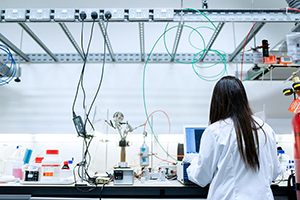How Can the CHIPS and Science Act Deliver on Its Promises?
 The CHIPS and Science Act, signed into law in August, is one of the most significant pieces of science legislation in years. With $180 billion for research and development over the next five years, it aims to bolster the semiconductor industry as well as federal science agencies like the National Science Foundation and Department of Energy. But now comes what many observers view as the hardest part: not only must the money be appropriated, but the act must be implemented in a way that meets its many objectives. Writing in Issues, experts explore the ways the CHIPS and Science Act can deliver on its promises to spur innovation, strengthen regional economies and workforce, and promote US competitiveness.
The CHIPS and Science Act, signed into law in August, is one of the most significant pieces of science legislation in years. With $180 billion for research and development over the next five years, it aims to bolster the semiconductor industry as well as federal science agencies like the National Science Foundation and Department of Energy. But now comes what many observers view as the hardest part: not only must the money be appropriated, but the act must be implemented in a way that meets its many objectives. Writing in Issues, experts explore the ways the CHIPS and Science Act can deliver on its promises to spur innovation, strengthen regional economies and workforce, and promote US competitiveness.
On November 1 at 3:00 PM ET, join Yu Zhou (Vassar College), Steven C. Currall (University of South Florida), Venkatesh Narayanamurti (Harvard University), and Maryann Feldman (Arizona State University) in a discussion moderated by Will Thomas of the American Institute of Physics’ FYI on how implementation of this important legislation can best meet—and balance—its many goals.
Register now!
Panelist Articles
- “Competing With China” by Yu Zhou
- “An Inflection Point for Technological Leadership?” by Steven C. Currall and Venkatesh Naryanamurti
- “Place-Based Economic Development” by Maryann Feldman
Keep the conversation going on Twitter by following @ISSUESinST. And stay up-to-date on the latest news and events from Issues with for our free digital newsletter.
